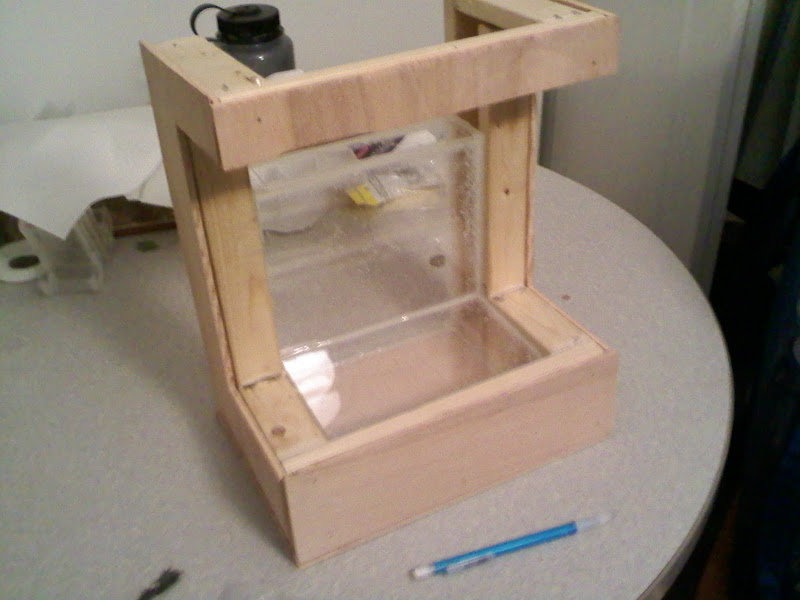UPDATED: See below!!
Hey guys, I'm building a small betta tank, because the one I had originally bought is too small. (It's about 1.8 Gal and the new one will be about 3.5 with a mini "sump" that's about 1 or 2 Gal.)
So far I've build the sides of the tank. I'm using weld on #4 and since I don't really trust my seams, some 100% pure silicon to seal the edges. (Yes I know silicon alone isn't enough, but the combination of the two should be good)
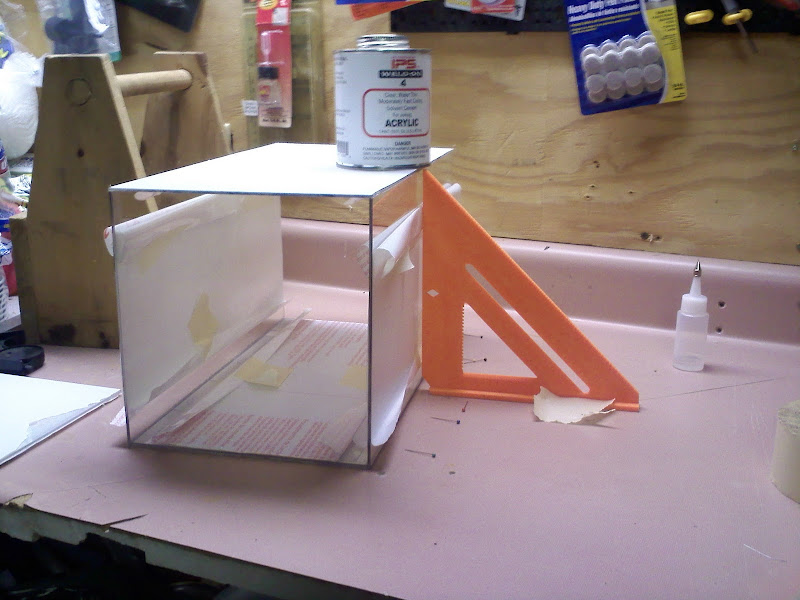
Here's the design of what I'm building.
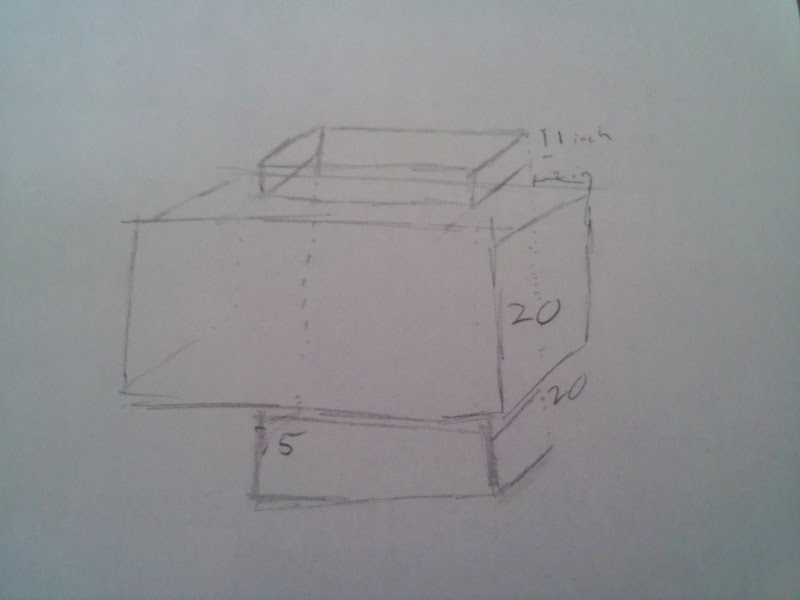
Basically the tank is in the middle, and there is a wood frame supporting it. What I can't seem to figure out is, how should I attach the tank to the wood? I've debated some kind of carpenters glue, and screws. Honestly I'm leaning toward glue for two reasons. If the frame is built tight enough around the tank, the tank shouldn't slip out and the glue should just be extra support. And, I really don't want to drill holes in the acrylic. It was hard enough cutting the dang stuff without cracking it.
Any suggestions?
Secondly, yes this thing will be very front heavy. That's why I'm putting a mini "sump" in the back and bottom. This'll bring the center of gravity down and toward the middle more, making it more balanced. Plus, I'm going for a very modern, sleek look, and it'll be a good place to hide my heater and pump. Also, the bottom frame extends further than the top frame, so it'll support it better.
Thirdly, I'm going to have to paint the back, bottom, and top of the tank where the wood meets the tank, simply so someone can't see the wood. The wood will be painted black, to follow with the modern theme, so I was thinking black. Will that look ok?
Fourthly, following the modern theme, I'll be getting black substrate. I know there are a couple of choices out there, so what is the best (and hopefully most cost effective/easiest) route I can take?
Fifthly, I MIGHT put a small plant in the tank. The green contrast would look good against the black. Now I have done ZERO research on plants, so can you guys suggest a small, low maintenance plant that I could use?
Hey guys, I'm building a small betta tank, because the one I had originally bought is too small. (It's about 1.8 Gal and the new one will be about 3.5 with a mini "sump" that's about 1 or 2 Gal.)
So far I've build the sides of the tank. I'm using weld on #4 and since I don't really trust my seams, some 100% pure silicon to seal the edges. (Yes I know silicon alone isn't enough, but the combination of the two should be good)

Here's the design of what I'm building.

Basically the tank is in the middle, and there is a wood frame supporting it. What I can't seem to figure out is, how should I attach the tank to the wood? I've debated some kind of carpenters glue, and screws. Honestly I'm leaning toward glue for two reasons. If the frame is built tight enough around the tank, the tank shouldn't slip out and the glue should just be extra support. And, I really don't want to drill holes in the acrylic. It was hard enough cutting the dang stuff without cracking it.
Any suggestions?
Secondly, yes this thing will be very front heavy. That's why I'm putting a mini "sump" in the back and bottom. This'll bring the center of gravity down and toward the middle more, making it more balanced. Plus, I'm going for a very modern, sleek look, and it'll be a good place to hide my heater and pump. Also, the bottom frame extends further than the top frame, so it'll support it better.
Thirdly, I'm going to have to paint the back, bottom, and top of the tank where the wood meets the tank, simply so someone can't see the wood. The wood will be painted black, to follow with the modern theme, so I was thinking black. Will that look ok?
Fourthly, following the modern theme, I'll be getting black substrate. I know there are a couple of choices out there, so what is the best (and hopefully most cost effective/easiest) route I can take?
Fifthly, I MIGHT put a small plant in the tank. The green contrast would look good against the black. Now I have done ZERO research on plants, so can you guys suggest a small, low maintenance plant that I could use?


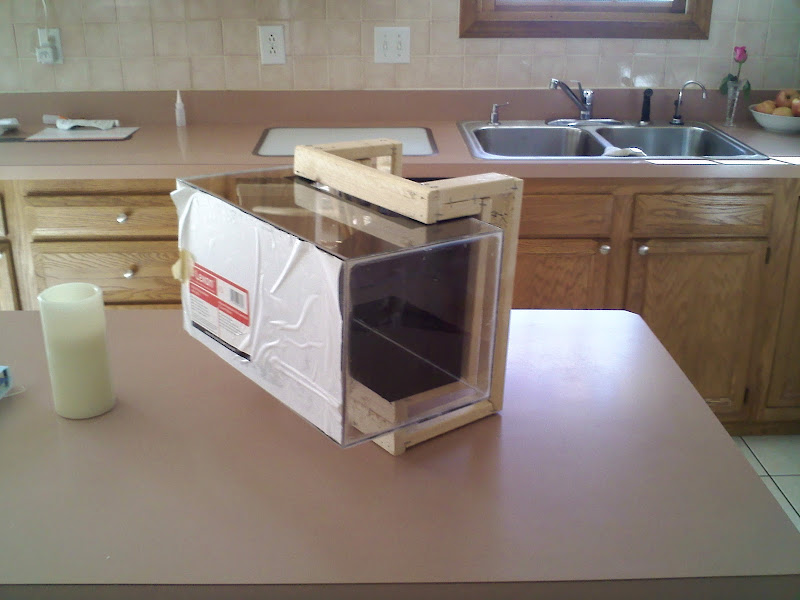
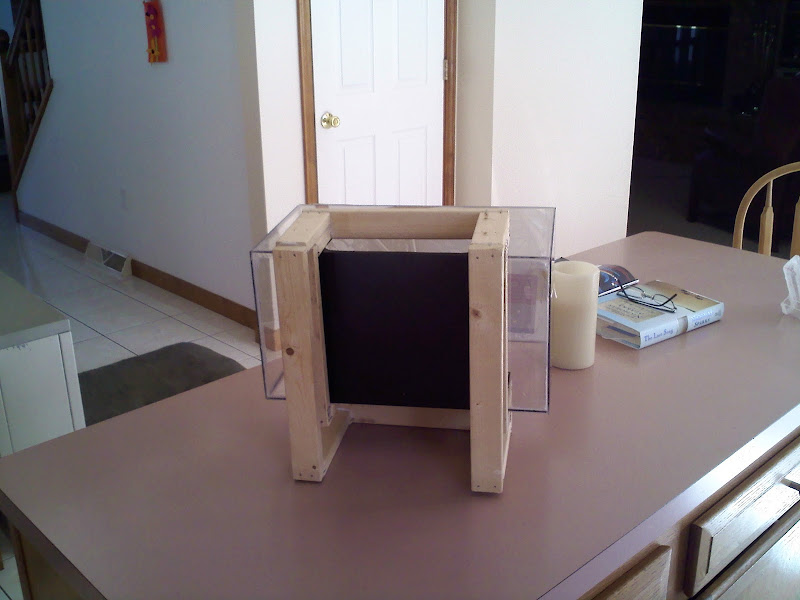
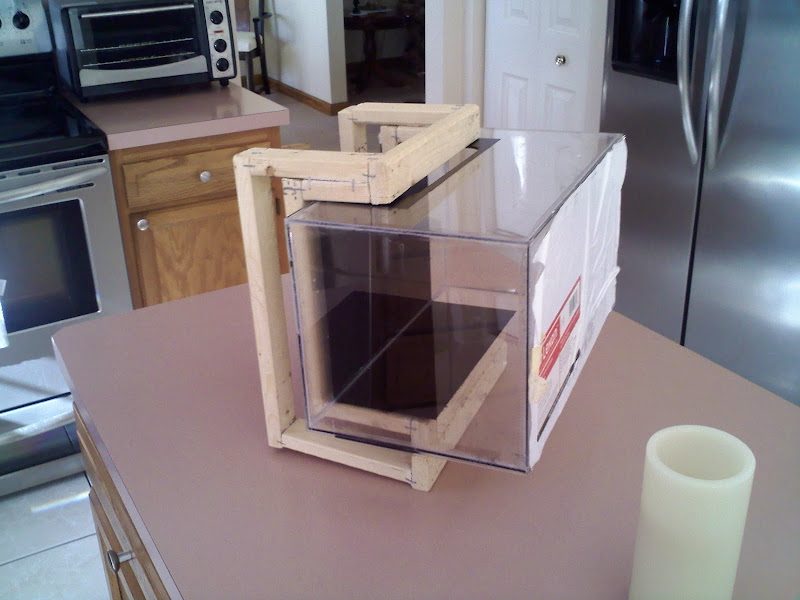
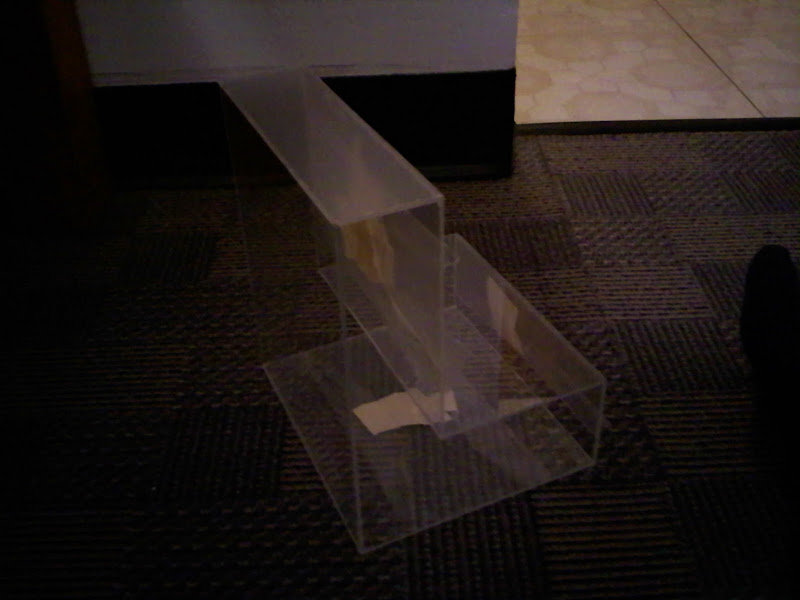
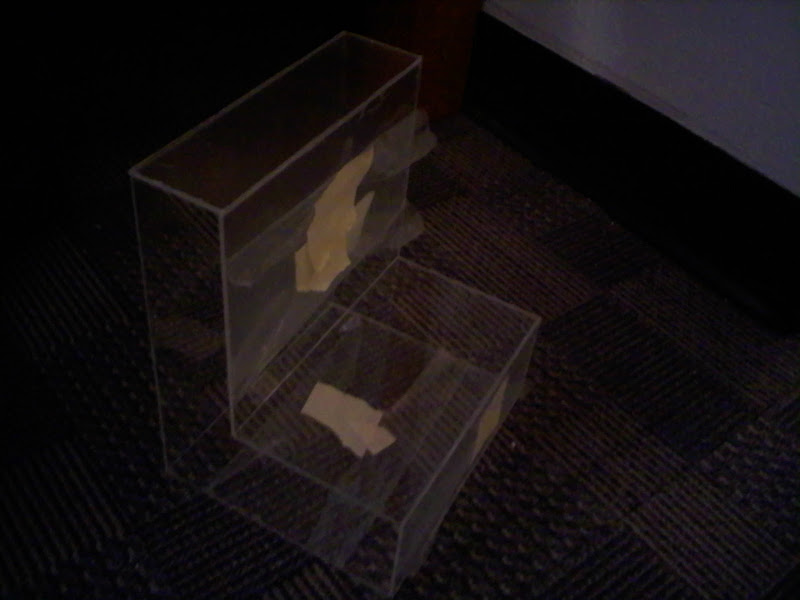
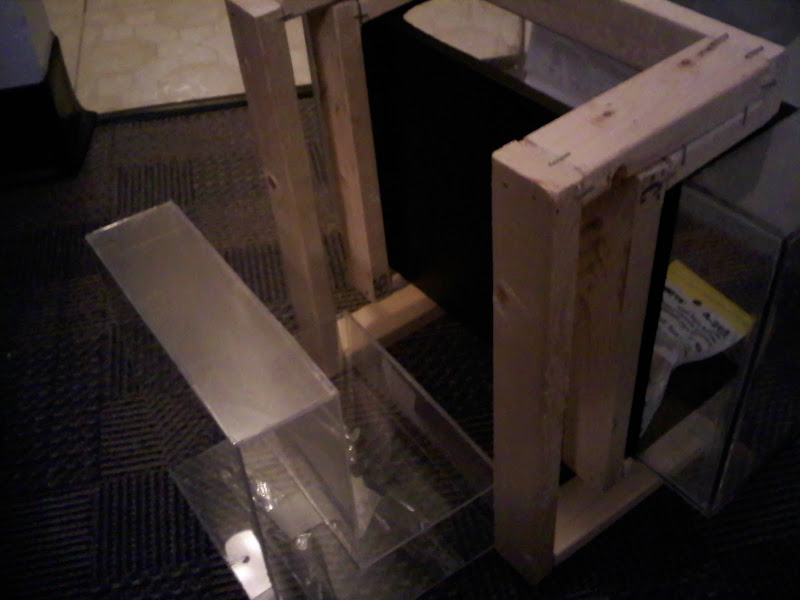
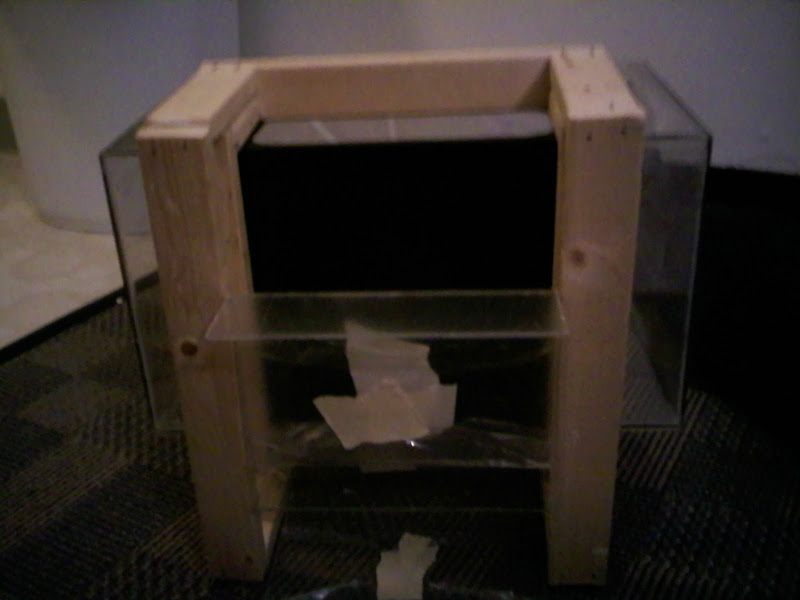
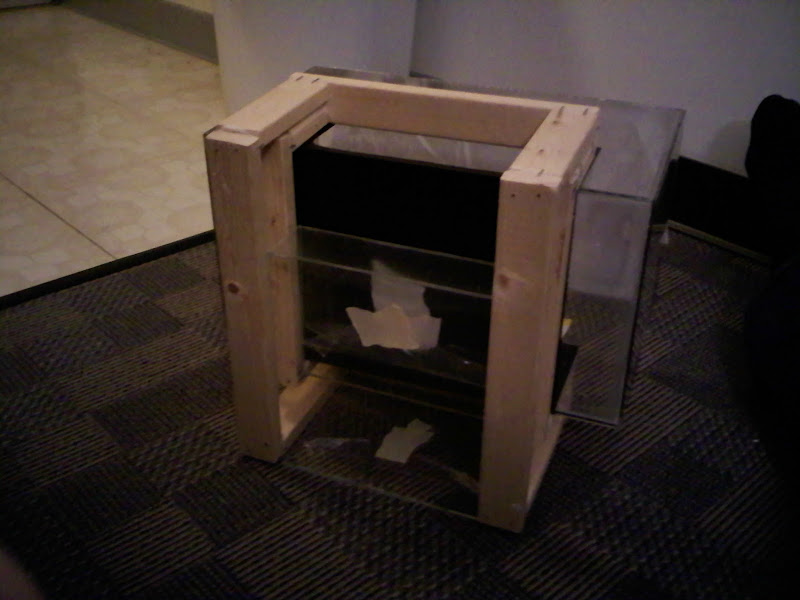
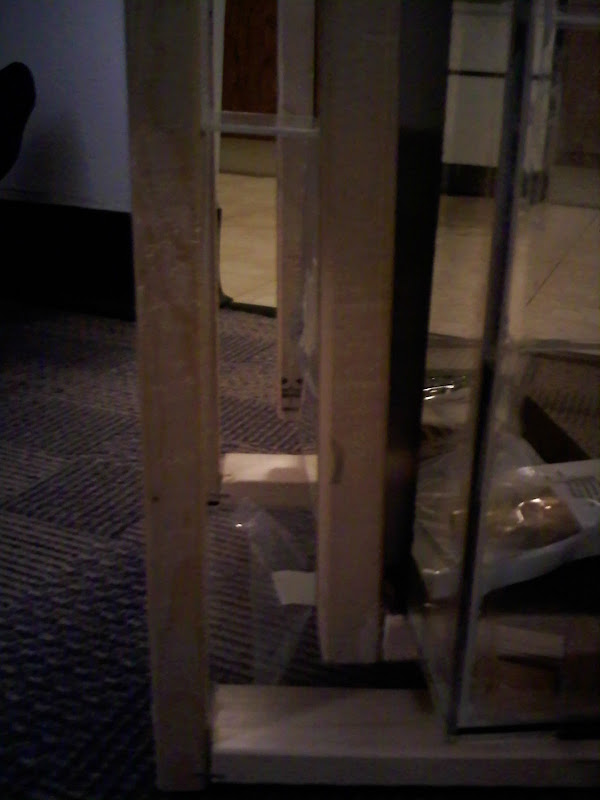
 I do have nice bits, and was planning on using them, but of course I couldn't. Also, apparently we don't have one level surface in my house (besides the kitchen counter.) Also makes me angry...
I do have nice bits, and was planning on using them, but of course I couldn't. Also, apparently we don't have one level surface in my house (besides the kitchen counter.) Also makes me angry... 
